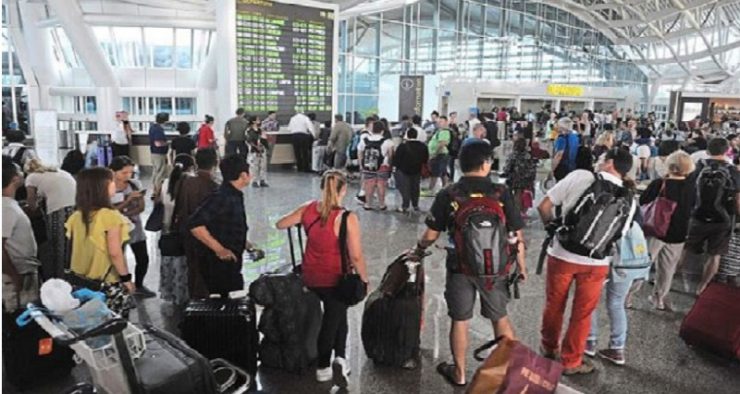THE COVID-19 pandemic has devastated the aviation industry. Although it has not been able to reach the normal level, the association of national airlines aka the Indonesia National Air Carrier Association (INACA) sees a recovery trend with a number of records.
According to General Chairperson of INACA Denon Prawiraatmadja said that over the past two years, the COVID-19 pandemic had a significant effect and had a direct impact on the world aviation industry, including the Indonesian market and the domestic tourism industry. The recovery of the aviation industry cannot be separated from the handling of the pandemic and the policies taken by the government in the transportation sector.
So far, Denon said controlling COVID-19 cases and incessant vaccinations had fostered the movement of airplane passengers. Although he didn’t go into details, Denon gave an illustration that in general, passenger movement has grown positively above 50% compared to last year.
“In 2020, the number will be around 23 million passengers. Of course, in 2021, we hope that with the implementation of restrictions on community activities (PPKM) regulation, which is already low, it can provide a positive prospect for the aviation industry,” Denon said in a virtual session of the 2021 General Meeting of Members press conference, Thursday (11/18).
Denon explained that INACA also compiled a white paper related to the prospects for the national aviation industry which was made with the University of Padjadjaran (Unpad). INACA projects that the recovery of the domestic aviation industry will get better in 2022, although it will only return to its optimal level in 2024.
Meanwhile, international flights are predicted to start improving at the end of 2023, and return to optimal levels in 2026. In addition to controlling the pandemic and also expanding the vaccination program, INACA also hopes for support from the government to encourage the recovery of the aviation industry.
Denon gave an example of the Passenger Service Charge (PSC) fee stimulus provided by the Ministry of Transportation in December 2020. He also hopes that government regulations such as Law no. 7 concerning Harmonization of Tax Regulations is not a disincentive to the recovery of the aviation industry.
“Surely INACA will collaborate with the government regarding regulations that can relax, so that the recovery process is not too long. So that in 2023-2024 the number of domestic flight passengers, which amount to 80%, can return to the same as in 2018 or 2019,” explained Denon.
On the other hand, the government plans to implement Community Activity Restrictions (PPKM) level 3 in all regions, effective from December 24, 2021 to January 2, 2022. Regarding the impact of this policy on the aviation industry, unfortunately, INACA has not provided a specific explanation.
Secretary General of INACA Bayu Sutanto understands that the steps taken by the government are to anticipate fears of holiday euphoria at the end of the year. “At Christmas and New Year’s momentum, it is feared that there will be an increase (of COVID-19 cases), because what is happening in other countries is the same, due to a kind of euphoria of free travel,” he said.
He hopes that this step can prevent the emergence of a third wave of massive COVID-19 spread at the beginning of next year. That way, economic recovery, including the aviation industry, can be optimized.
In this case, Bayu gave a number of notes. First, the government still has to boost the vaccination program until it reaches a coverage level of 70% by mid-2022. The reason is that so far the second dose of vaccination has only reached 41%.
Vaccination is called by Bayu as a game changer, which can increase the confidence level of prospective passengers. In addition, it is also to contain the rate of Covid-19 cases so that mobility restrictions are no longer tightened, or can survive at PPKM level 1-2.
Second, Bayu sees a kind of market correction, especially from the corporate segment. Before the pandemic, business trips for meetings were common. But now, companies are optimizing meetings digitally.
Nevertheless, growth in domestic flights is still a mainstay. Because, the movement of foreign tourists will still be limited. “So, in 2022 there will still be growth from domestic factors. The key is to increase the vaccination rate, including the booster program, the third injection, this will affect the growth rate (in the aviation industry),” Bayu explained.
Taking into account the current passenger movement statistics and the driving factors, Bayu predicts that by 2022 it can reach up to 60 million-70 million passengers. However, as long as the pandemic has not been resolved, Bayu emphasized that projections in the aviation industry could quickly change following the situation.
“Pandemic is a correction factor, with the same assumptions and parameters, it is not necessarily possible to follow it. In the next 1-2 months there may be changes (policies) of progress and restrictions,” concluded Bayu. [kontan.co.id/photo special]
















